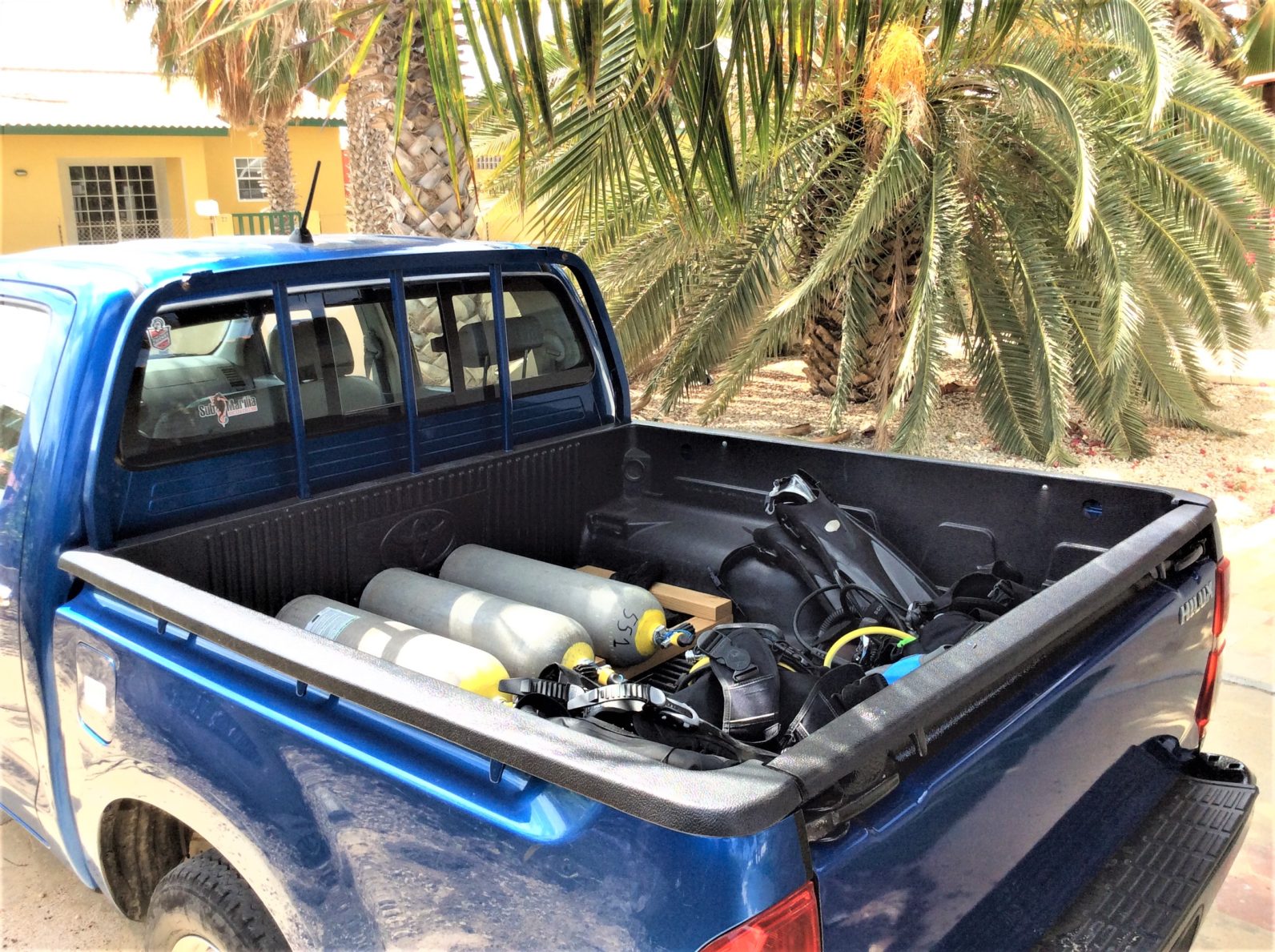
The motto emblazoned on their license plates isn’t overselling it, Bonaire really is a diver’s paradise, specifically, a shore diver’s paradise. First however, a little context.

Bonaire is the easternmost of the ABC islands and is essentially part of the Netherlands, expect wheels of gouda cheese (not kidding) to be found in the most surprising places. The upshot/downside (depending on your point of view), is the strong European influence and the presence of a very clean, large and rather well stocked super market, the Van Der Tweel, where on some days, you can find (in the parking lot, sold from the back of a modified Land Rover) a perhaps famous smoked chicken. I don’t know about famous, that’s a claim on the flyer, but I can tell you about delicious, have some if you have the chance.
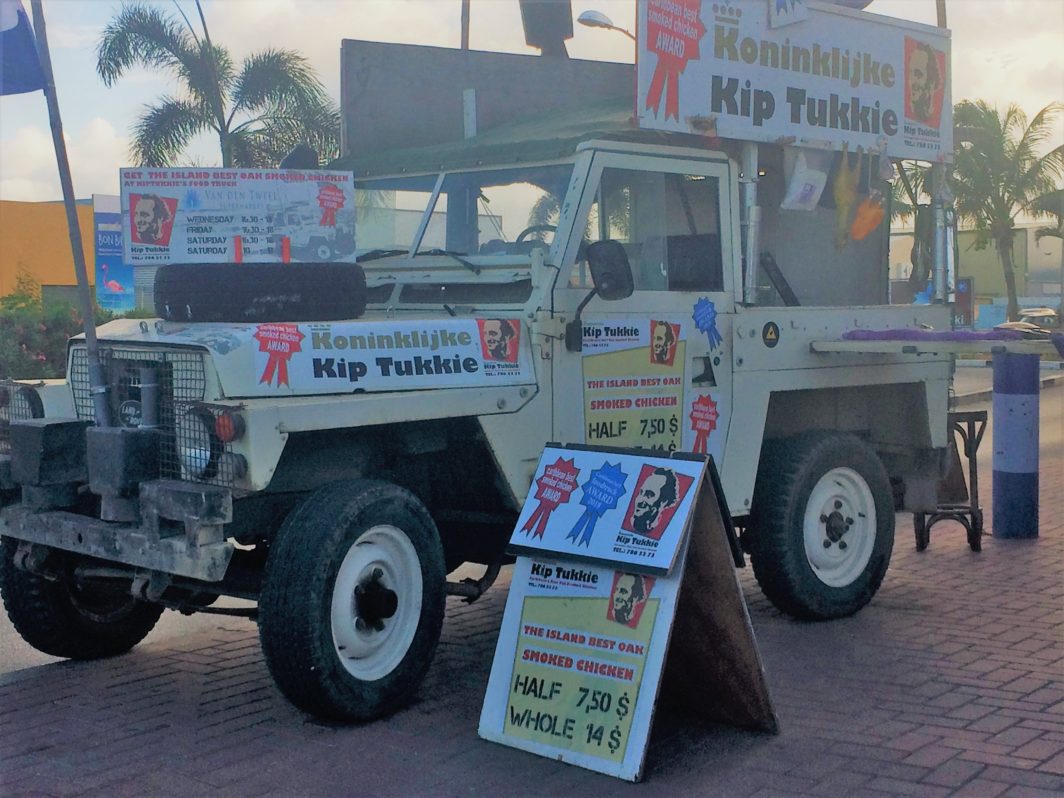
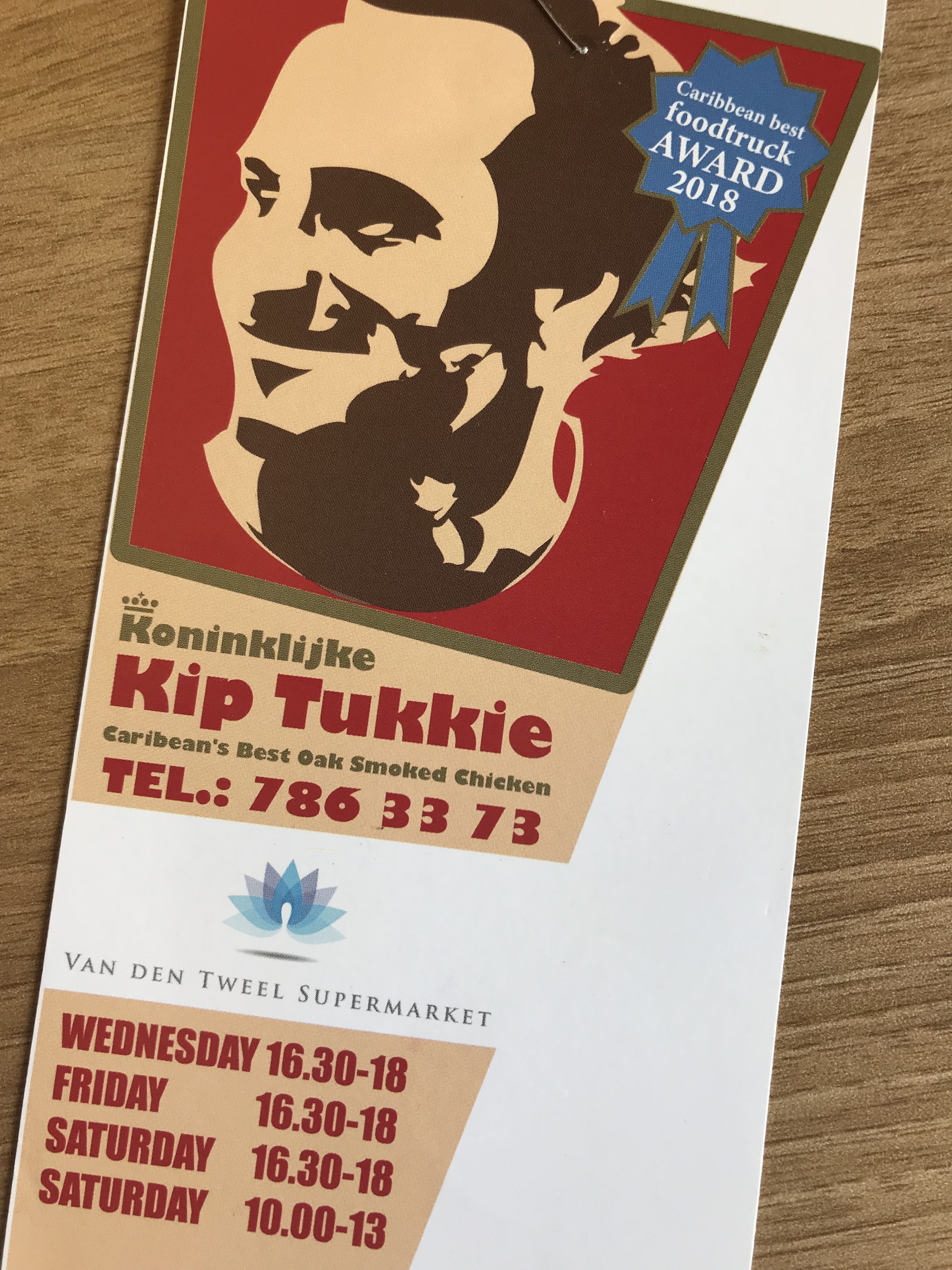
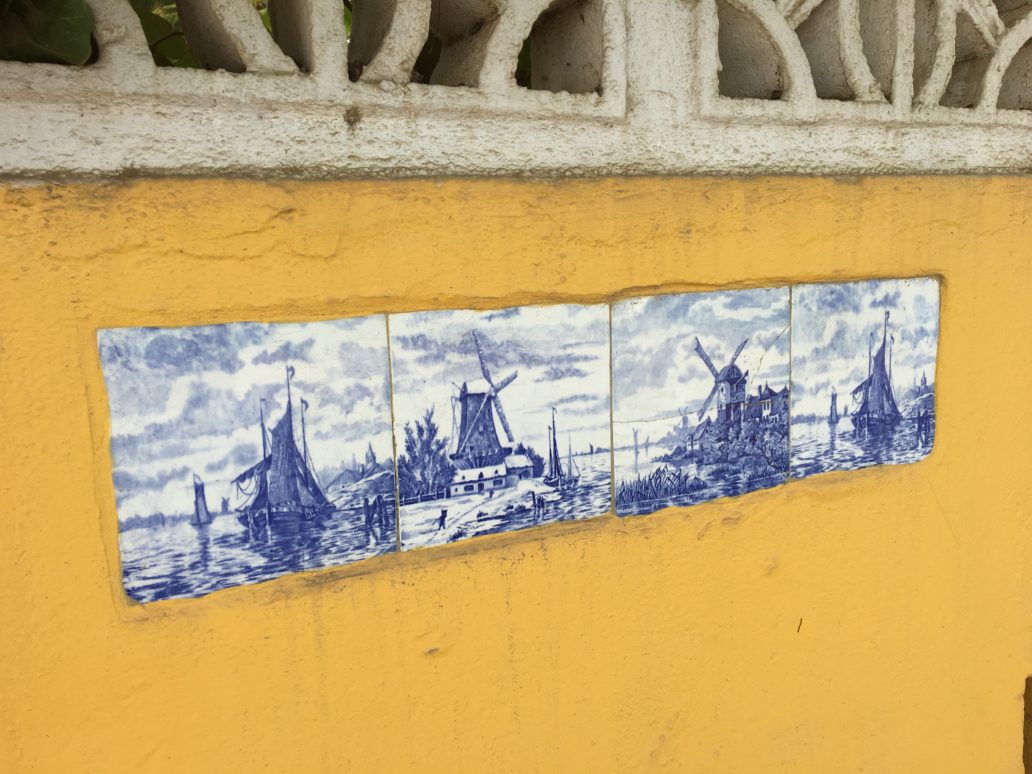
Yet this is still an island, so you are playing (as a local put it) grocery-lotto whenever you go shopping for something specific. The first two days we were on Bonaire there were no limes anywhere on the island (ouch). You ordered and Amstel Bright in a bar and it came with a disclaimer: we have no limes. Even the Van Der Tweel was limeless (apparently some time before it was ketchup). Eventually we saw a cargo ship docked one morning and we all thought the same thing, limes! And indeed, there was a trip to Margaritaville for us that evening. The only orange liqueur to be found however was Grand Marnier: grocery-lotto.

Bonaire is not a big island, it lies less than 90 km’s north of Venezuela, is about 37 km long as the crow (or flamingo) flies and a touch over 6 km wide at its thickest point. It has roughly 19k inhabitants and is one of four places in the world where flamingoes come to reproduce. You’ll find the flamingo all around you in Bonaire, from the swampy area behind your rented house (as in our case), to the name of the airport and sidewalk art. All the waters around Bonaire are one big marine park and about 20% of the island (in the north) is also protected. Beside flamingoes, on land you’ll run into (hopefully not literally) wild goats, donkeys and plenty of iguanas (aka island chicken, some restaurants serve it, but my quest to taste the beast was fruitless).
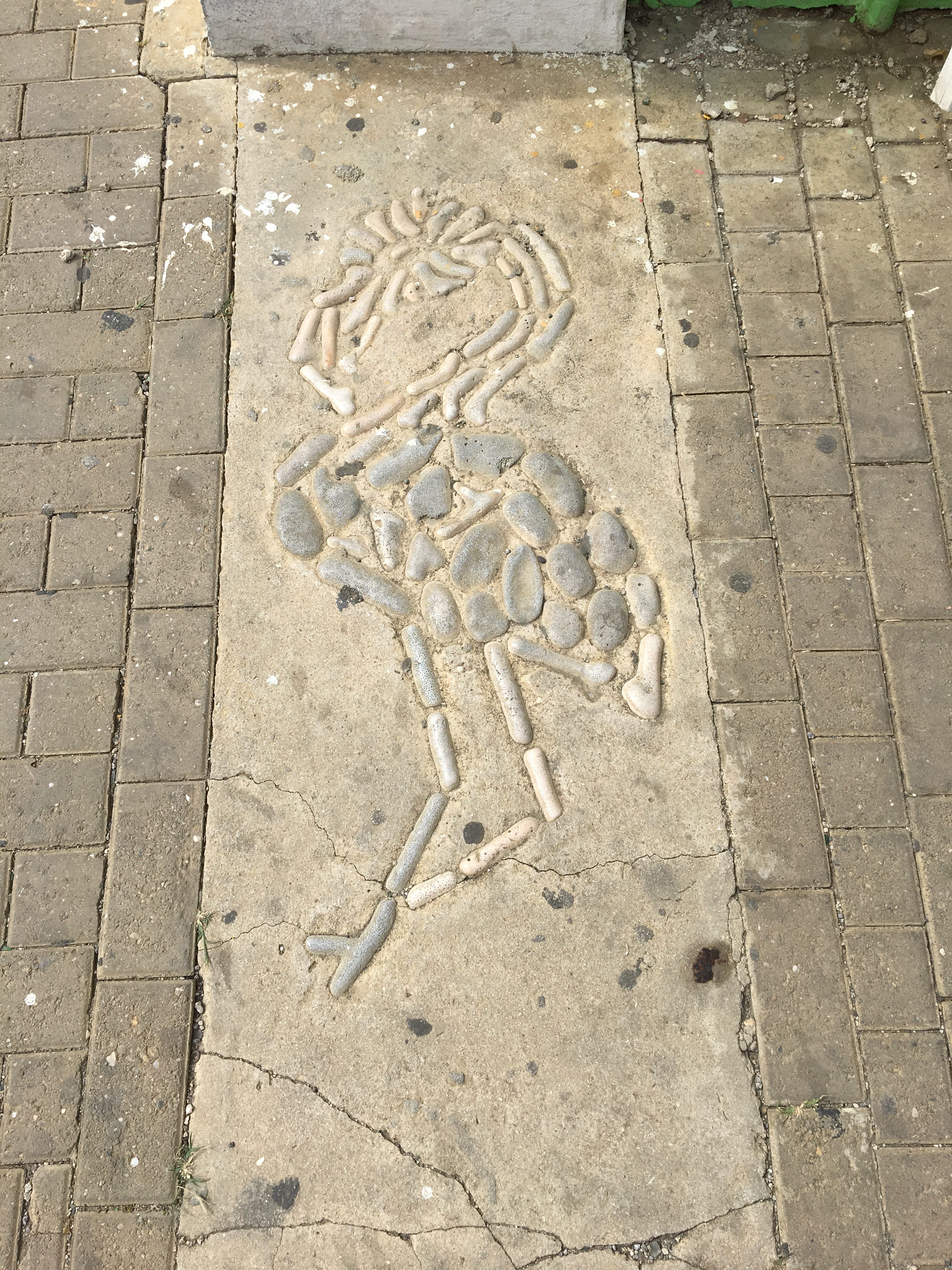
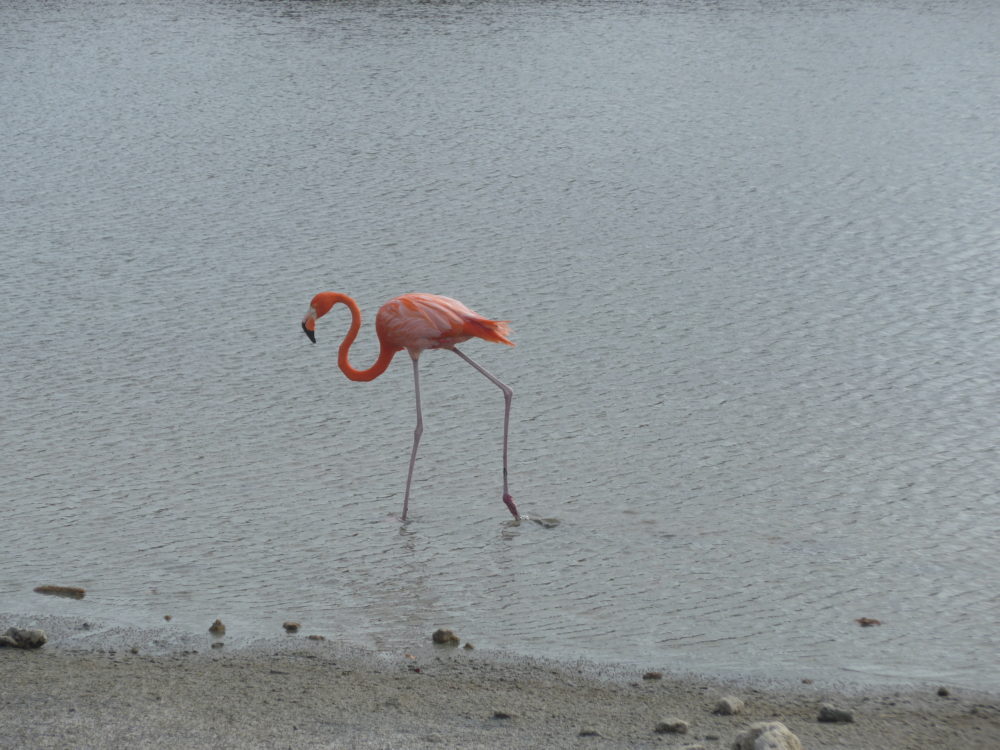
Considering the population, you can imagine how the 300 000 visitors per year, around 170 000 of those from cruise ships, is important to the economy. When a cruise ship docks, it completely dwarfs the town and it can be seen from miles out. I assume it is best to avoid the dock/downtown area for that day (or until the ship leaves, typically around 1600-1700), for fear of being blinded by fluorescent sunburns and neon coloured leggings or being caught in a traffic jam of Segway riding, cola drinking out of shape people. Yeah, I’m a little judgy, and I admit there’s a possibility that I am being unfair. I went on one (cold weather) cruise and hated pretty much every minute of it, so I’m a little biased against that whole ecosystem. The rest of the tourists (the cool kids) are mostly comprised of either scuba divers or kite/wind surfers. Bonaire is not a beach destination as such, you will not find long expanses of sand. On the contrary most beaches are broken up coral and foot protection is a great idea. My little hissy fit about cruise ships aside, Bonaire is far from overcrowded, nearby Aruba, a slightly smaller island, has a population of over a 100k people. If you like your vacations on the slightly adventurous side and a little off the beaten path, you can definitely find that on Bonaire.
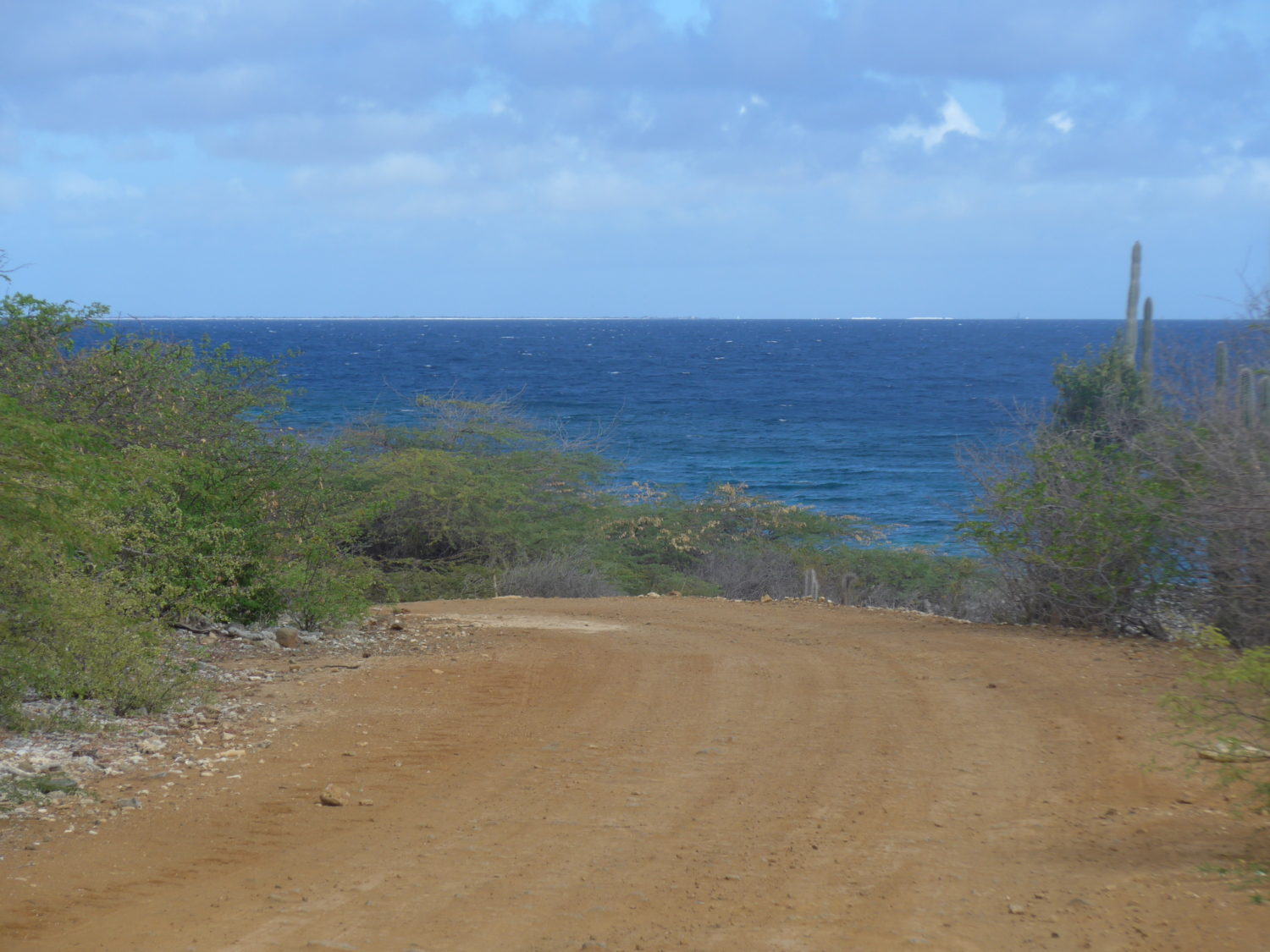
The island has, like pretty much all of the Caribbean, a dark and loathsome past having to do with slavery and depopulation. The salt flats on Bonaire used to be exploited by slaves and were shut down (they were reopened fairly recently) once slavery was abolished because they were no longer lucrative without the free labour. Some of the horror of slavery touches your mind when you stop by the side of the road to visit some of the slave houses, and “house” is used extremely loosely. They are little more than rock and masonry shelters, much too low to stand up in, where six men would sleep in during the week while they worked on the flats. On Sundays some of them could walk to Rincon, 6 or 7 hours by foot, to perhaps spend some time with their family. Apparently, it was better than sleeping on the beach. I got the bad kind of spine tingles just standing around those “houses”. Today tall white mountains of salt and those little huts are contrasting reminders of the past.
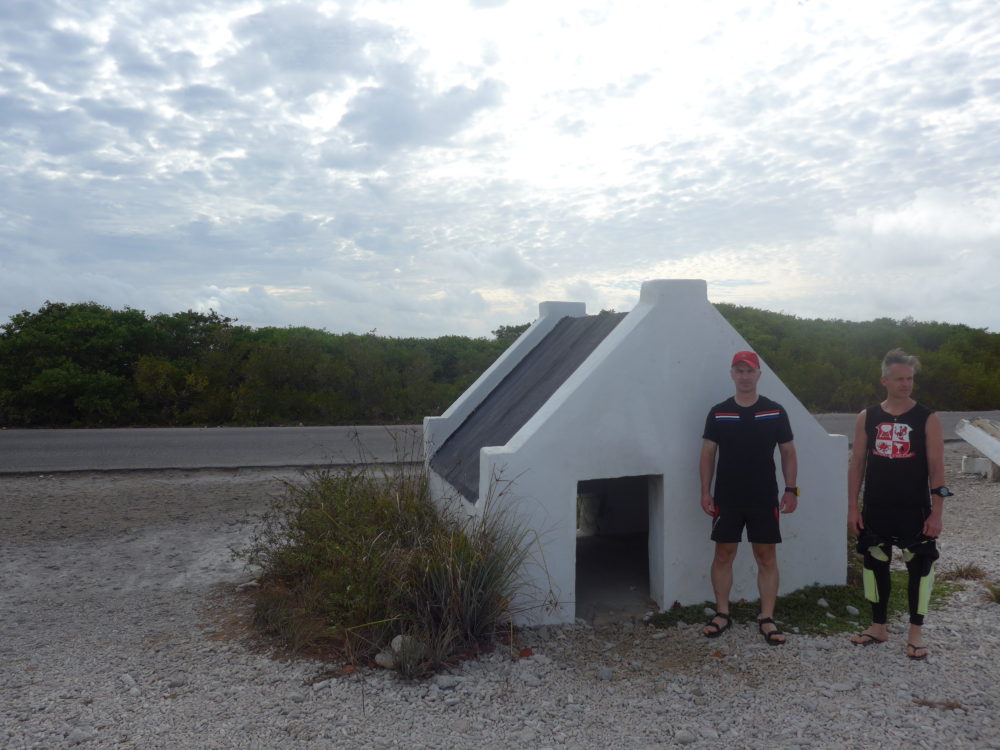
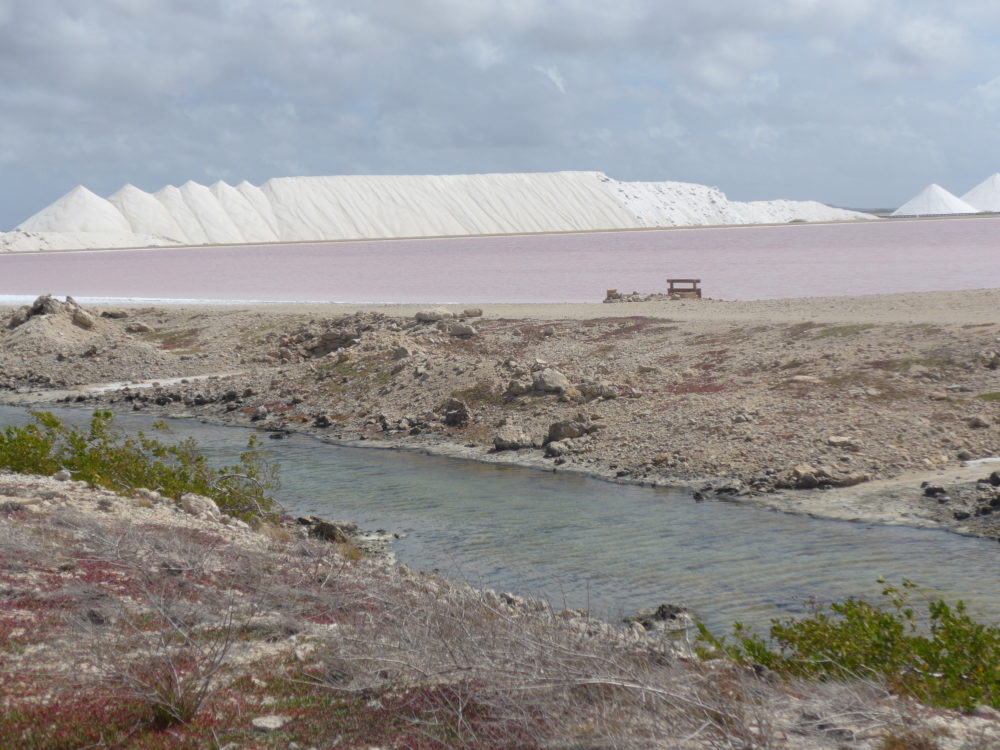
Most of the dive sites in Bonaire are on its western side, protected from the constant wind. There are a few sites on the eastern coast, but these are accessible only during the few months of the year when the wind dies down and by boat. However, with over 80 sites, Bonaire’s west coast should have more than enough to keep you busy. All the sites are marked by the ubiquitous yellow painted rocks and clearly identified, you would be hard pressed to mistake “Angel City” for “Windsock”.
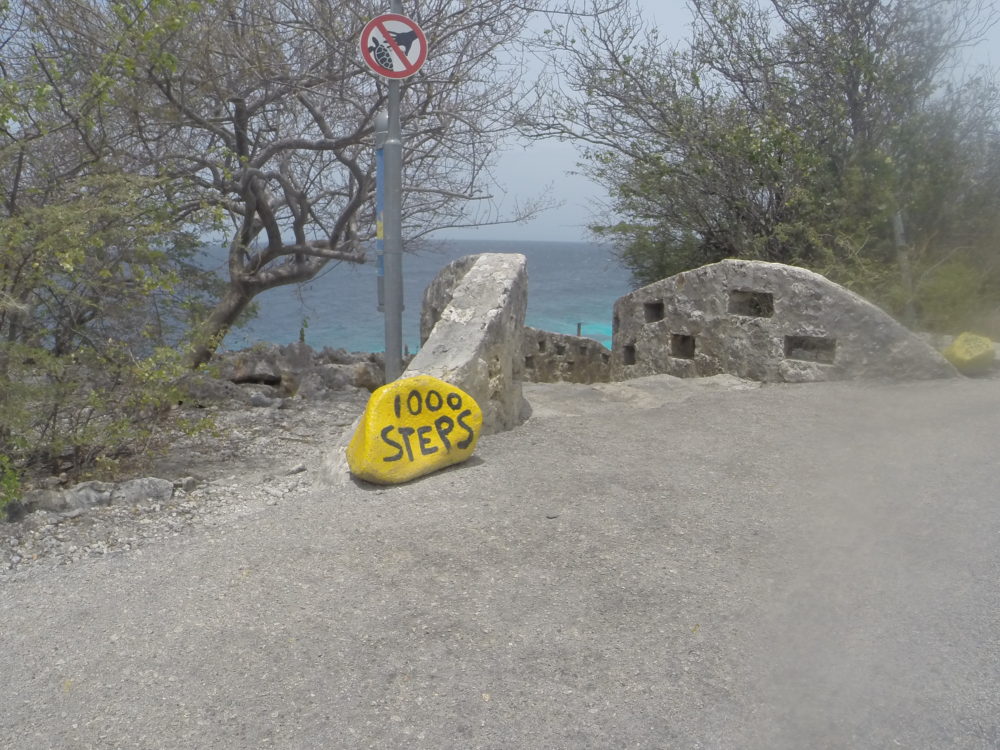
Many sites also have buoys in the water to help with your orientation. Basically, shore diving in Bonaire is a cinch. Pick a spot that strikes your fancy (really, they are all good), swim out to the buoy, see if there is any current (very little if any on all our dives but one), swim against it, and then come back when your air dictates it. If you time yourself and return close to the depth of the buoy mooring, I can’t see how you can get lost. We were extra fancy by using a compass to swim underwater to and from the buoy. That also allows you to have a leisurely 3@15 swim rather than just bob about a mooring line. Then odds are good you’ll surface right in front of your truck. Like a boss.
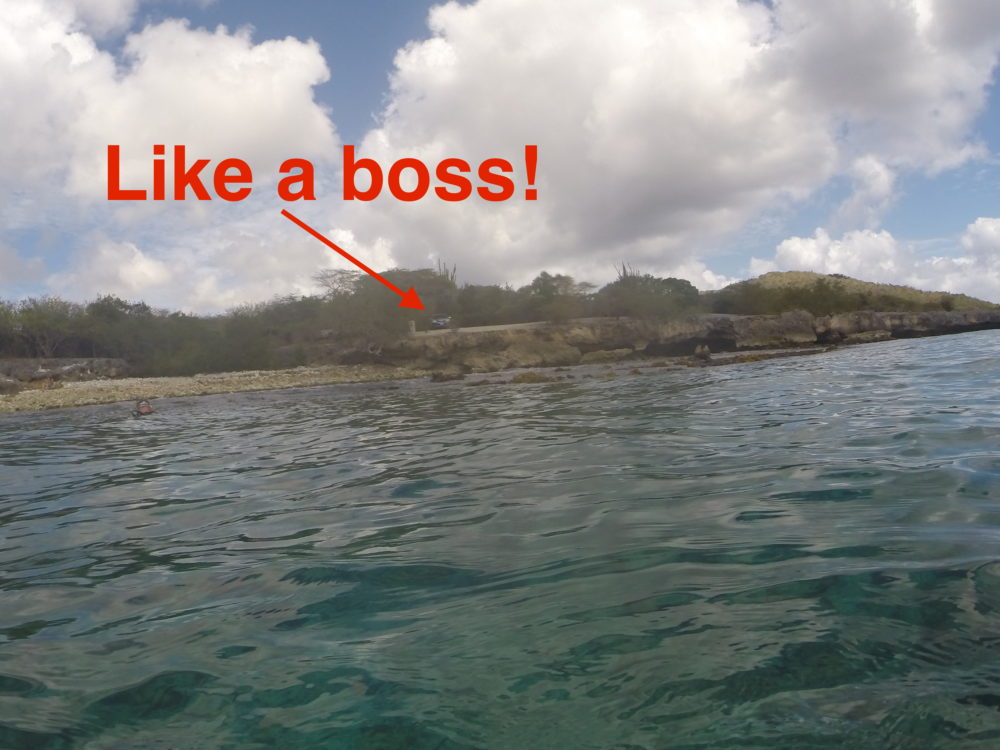
Speaking of which… Diver friendly pick-up trucks (with tank racks in the back) are all over the island. My only word of advice, if you are renting a house or hotel truck, and not one from a large rental company, is to check the wear of the tires. The rubber is often NOT covered by insurance, explicitly so in fact, and starting out with old, dry, cracked tires will just lead to unpleasantness, and a new set of tires for the owner, at your cost. Also, should you venture onto the trails leading to some more remote sites (and you absolutely should, the roads are unbelievably beautiful), you’ll need all the grip you can get.
Everyone we spoke with agreed that it is best to leave your truck unlocked when you go diving, tanks in the back and all. If somebody wants to make off with your towels and shorts so be it. We kept the truck keys and a bit of cash in a mostly waterproof pouch that went diving with us and all was well. Sandwiches stayed in back of the truck in a cooler. Honestly, I’d be more concerned about hungry divers than wayward locals. Typically, we would set out with six tanks in the truck and swap them out at the end of the day. We went with Dive Friends Bonaire, not because they had a better rep than other shops, but because they had an outlet close to our house. We will happily deal with them again next time we’re in that neck of the waves.
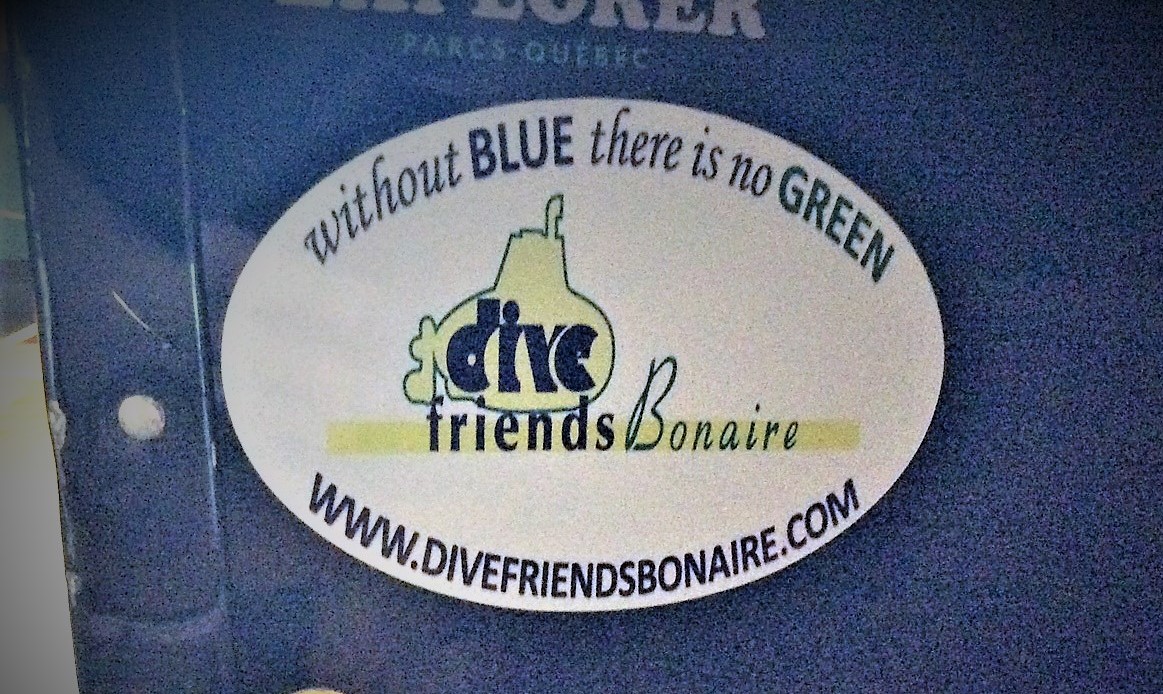
The staff was super nice, except for one know it all abrasive dude, but that happens everywhere. I would recommend them because they have six locations on the island where you can swap your tanks. Show up at any of them, flash your air card (if they ask, happened once all week) and go for it, super convenient and easy. Air or Nitrox is available for the same cost and 180$ will get you an UNLIMITED supply of air for the week. They only ask that you take no more than two per person at a time. So yeah, shore diving, much, much, much cheaper than boat diving…
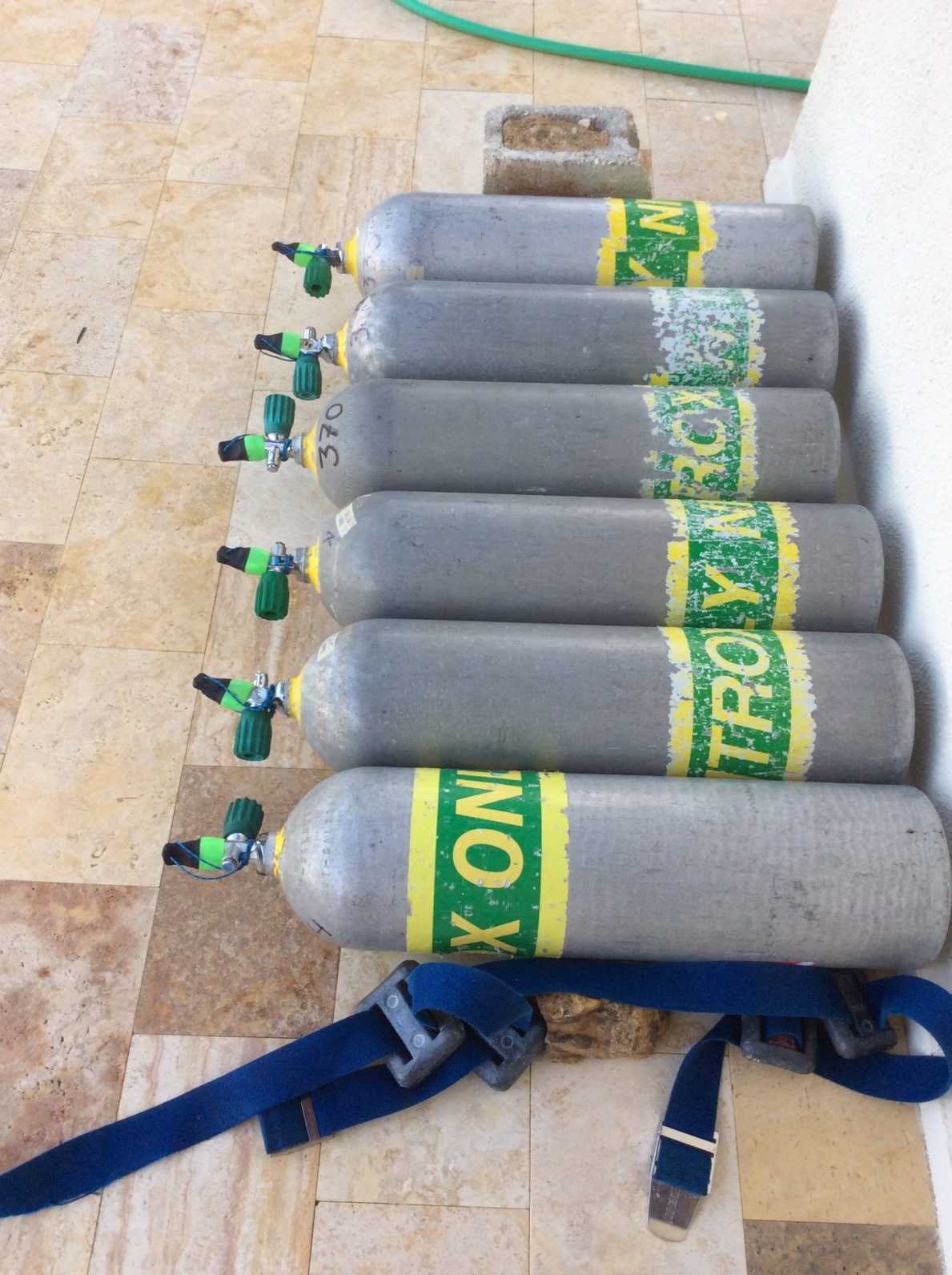
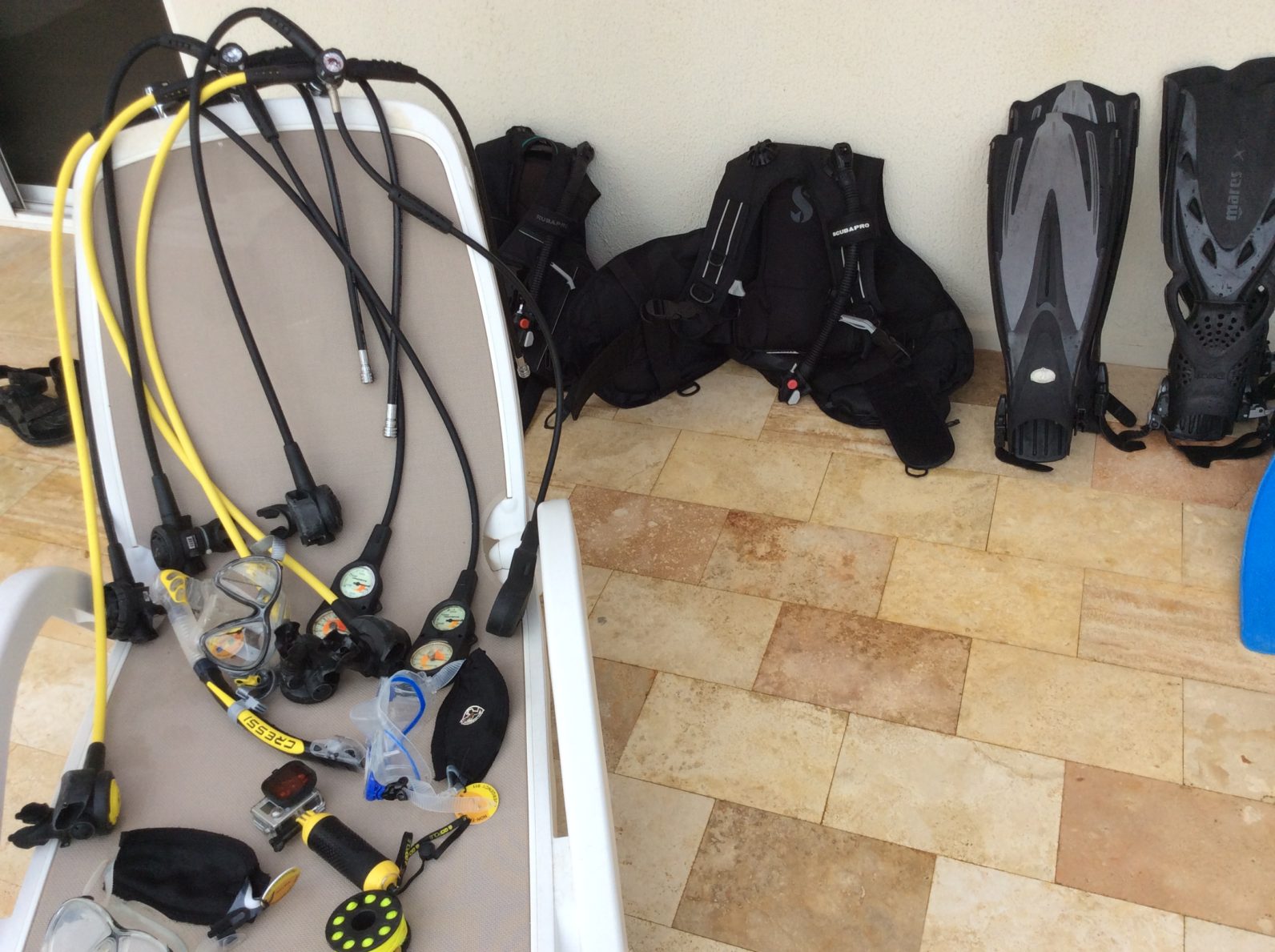
The reef around Bonaire is incredibly pristine. In fact, it is used as a benchmark of a healthy Caribbean reef by the NOAA. The coral is vibrant everywhere you look, and it’s mostly a double reef system on the western side of the island with a couple of walls for variety. Our dives rarely exceeded 60 to 70 feet, and we could see the sandy bottom further down at what looked like 120-140. The visibility is as good as you have heard. The only other place equally proud of its clear waters is, as far as I’m aware, the Cayman Islands. I hope we get to go soon so we can find out.
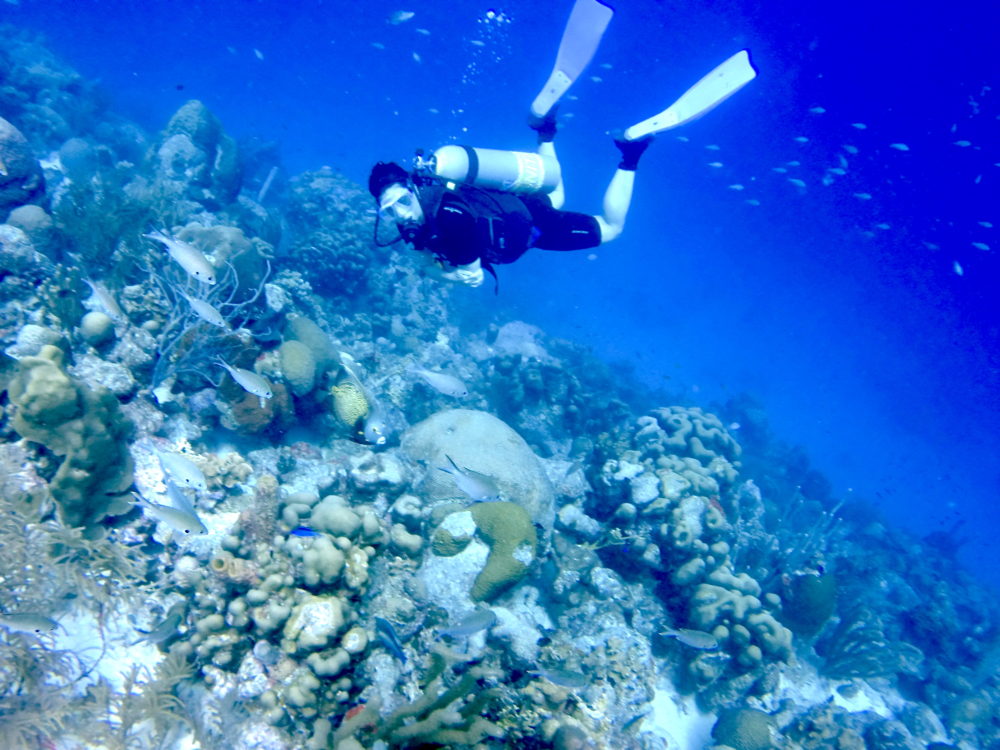
Since you are diving on your own you can spend as much time as you want in any given spot, nudibranchs, shrimp, or giant ass lobsters (it shows there’s mostly no fishing). Lionfish were present, but not in the same numbers as we’ve seen elsewhere a few years ago. It looks like when humans start eating something, we can really make a dent in a population (I’m proud of that I guess?), you will find lionfish on many local menus. Great amounts of smaller fishes were seen but we had no pelagic encounters (you have to go closer to the island’s southern tip for that, and the waves were a bit much when we were there), we saw one ray and no turtles. We did get to swim (and be followed by) many tarpons and a few barracudas. There are fish a plenty and (in April) quite a bit of jelly fish. We saw trunkfish nibble on them aggressively, you go trunk fish! Sharp tailed eel, moray eels (chainlink!), angel fishes, blue jacks (love these guys), grunts, wrasses, spotted drums, and all the usual suspects were present. The water was a touch (I mean a touch) colder than what we usually get, and my old “used to be 3mm” full wet suit was borderline for dives over an hour. Then again I get cold easy.
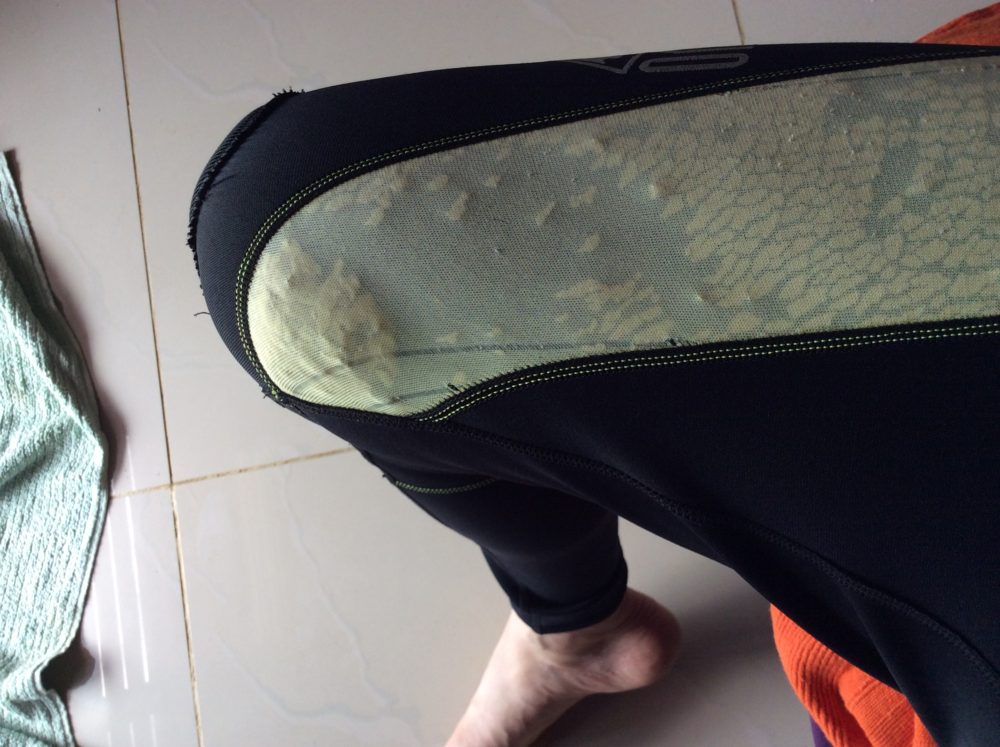
And to think (back to the pristine reef) we have mostly one man to thank for all of that, Captain Don.
Captain Don Stewart arrived on the island in 1962 at the age of 37, with a very leaky boat (that eventually sank) a typewriter (that sank also) and a background as an American navy officer having served in World war 2, an entrepreneur and something of a party animal. Sounds pretty great huh? He must have been a sorry sight when he reached Bonaire, apparently the governor (those were the days) told him he’d be thrown off the island if he turned out to be a bum, but could stay if he made the island better. And he did. He became a business man and a conservationist, giving hell to scuba divers breaking off coral to take home as souvenir (I can’t even imagine what would happen to you today). Eventually the tirades became the marine park. Captain Don severely injured his leg during an underwater salvage operation, years later it had to be amputated and he replaced it with a wooden peg, because of course, and had the leg buried. Apparently, he would quip that he could never leave the island since he already had a foot in the grave on Bonaire. In 2014, after almost 50 years on the island he became part of it forever. Today you can still stay and dive at Captain Don’s Habitat, the diver resort/hotel he founded (or gear up in their parking lot like we did).

T
*Every day we went there and every day there was either a ship or maintenance going on and we couldn’t dive it!
PS: Of course we left a sticker at the dive shop!
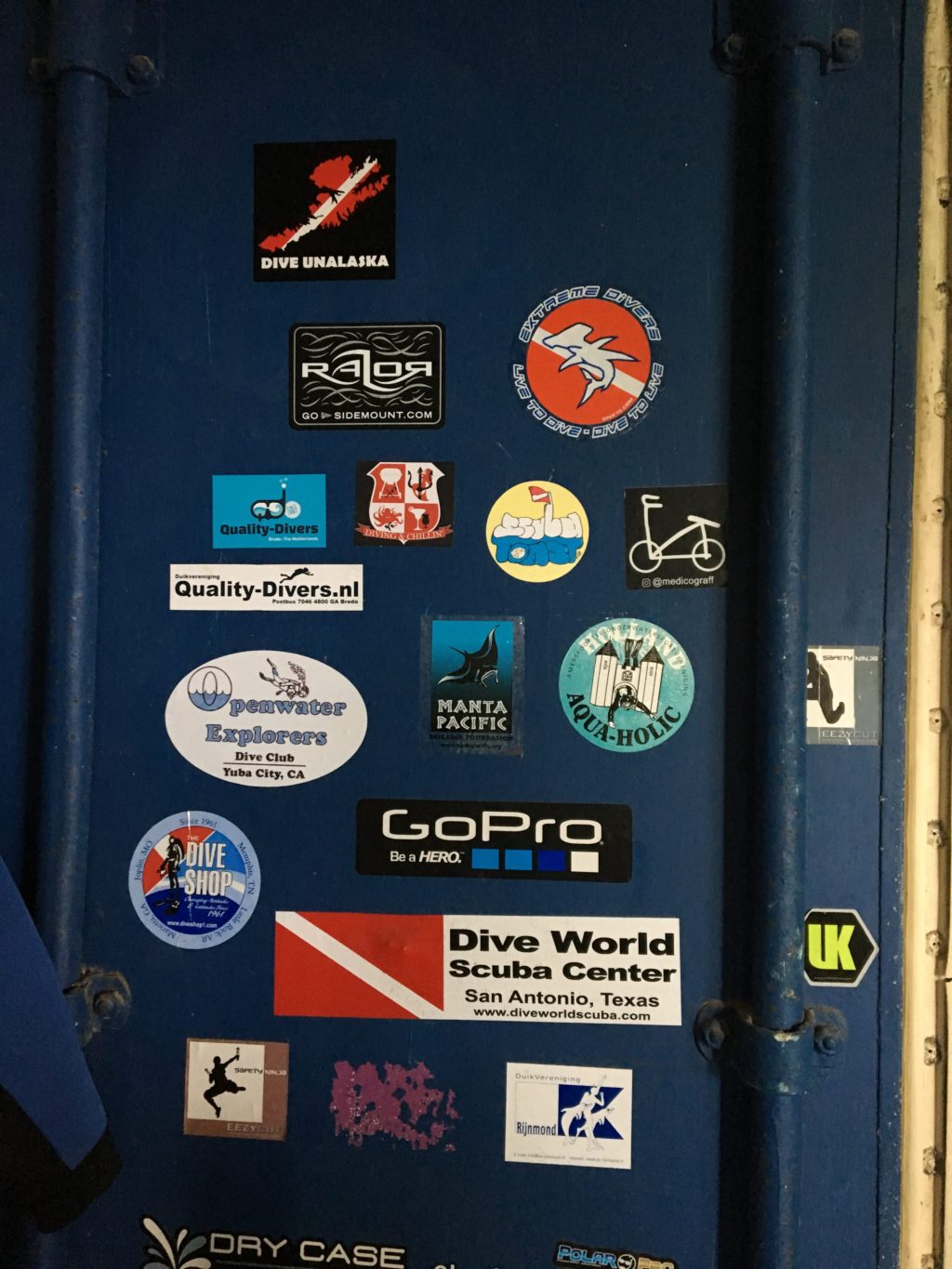

Very cool spot (in spite of the shortage of limes)!
Just amazing, seeing the blog that was on Nauville Evo
Hey Rodney! Good to hear from you, proper post on the Evo coming soon, I promise.